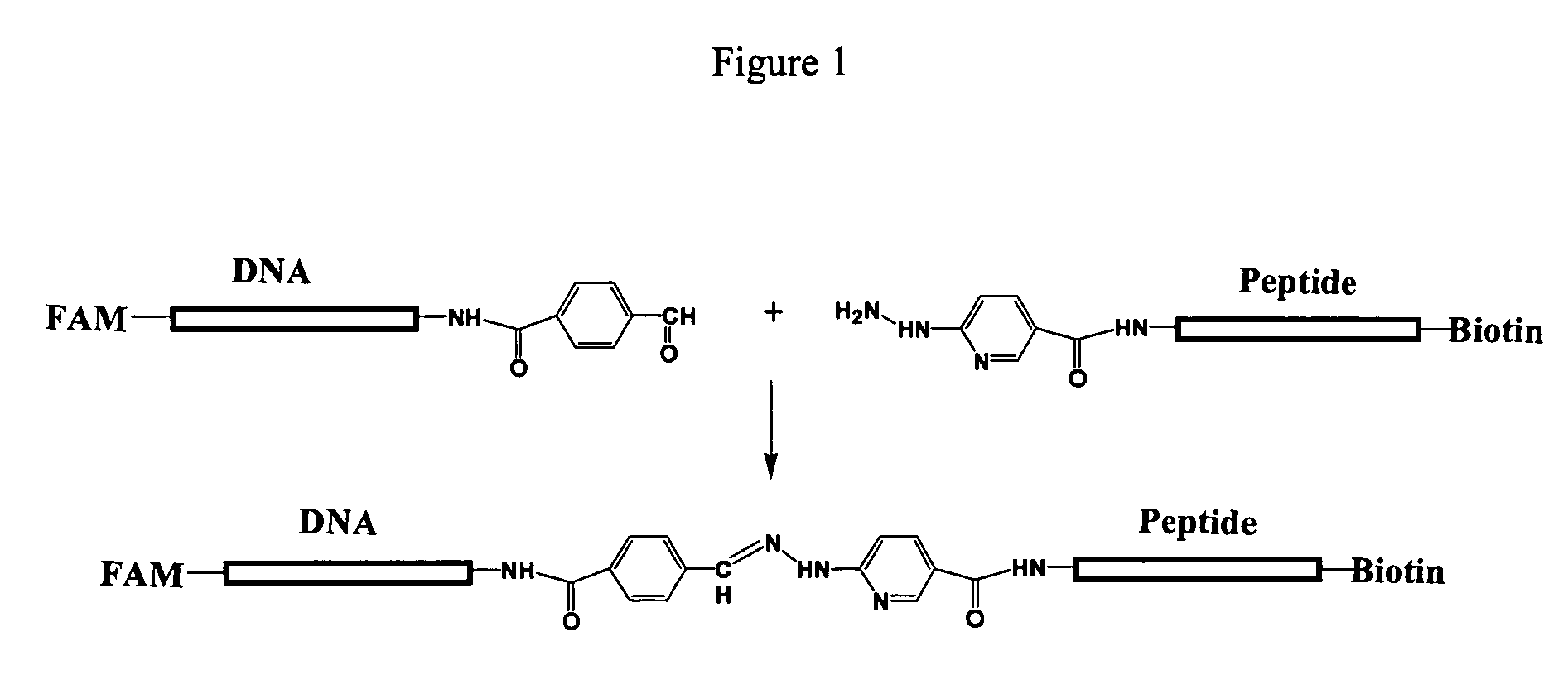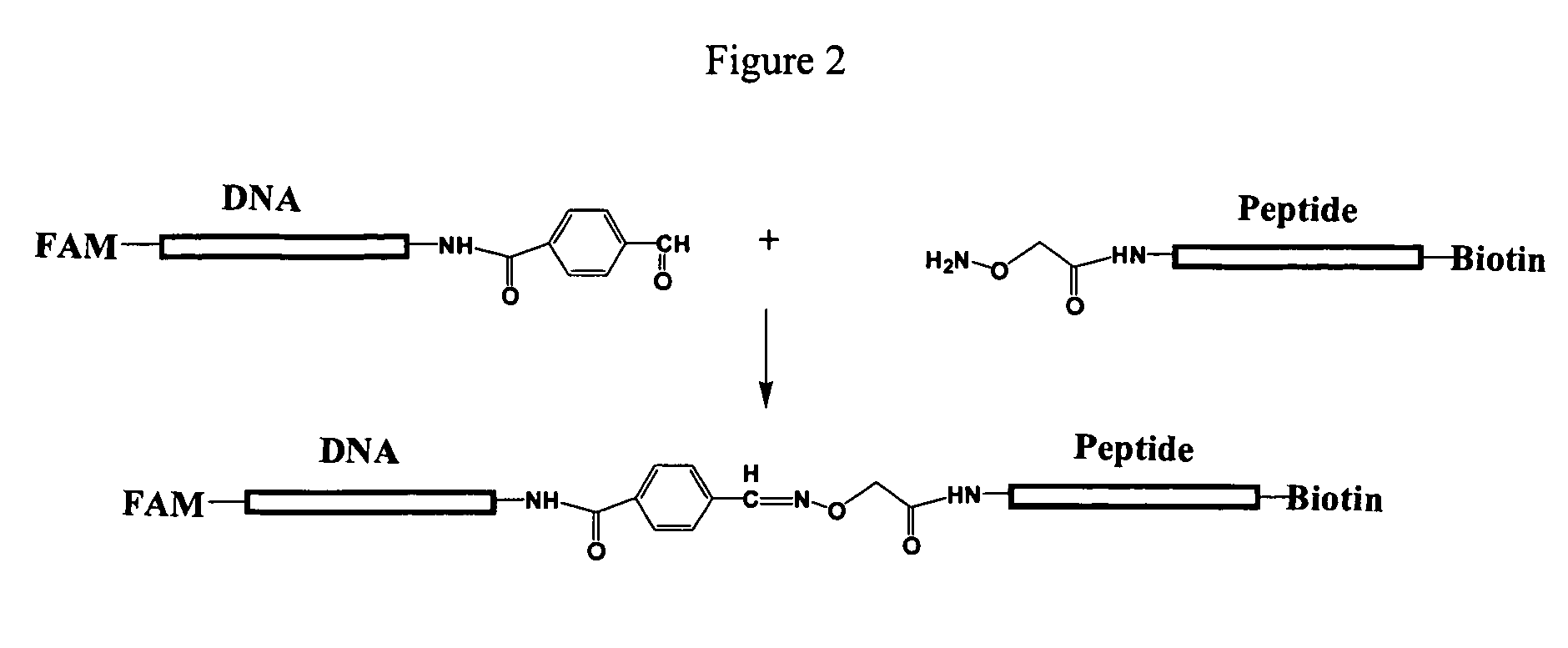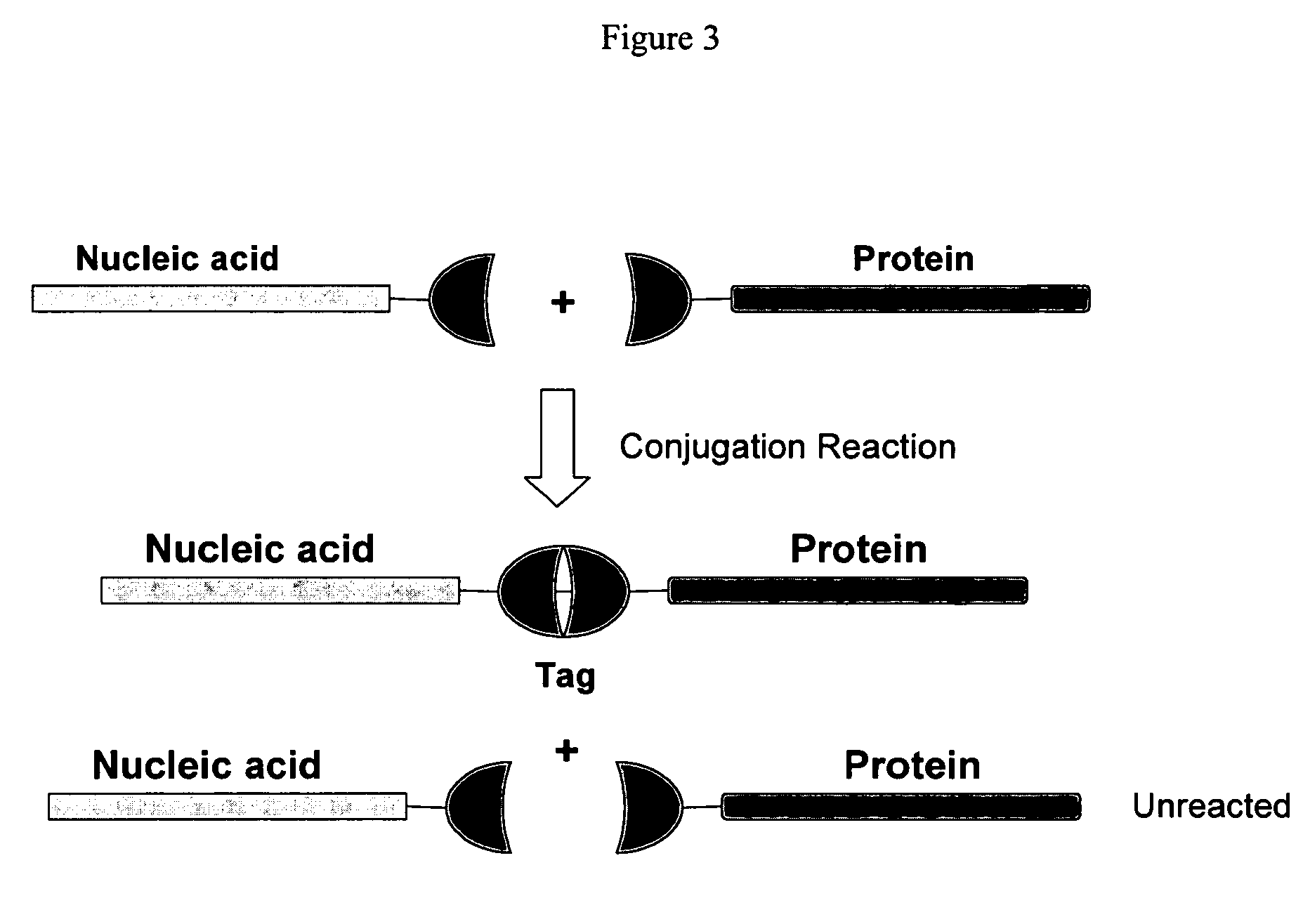Compositions and methods for detecting protease activity
a protease activity and protease technology, applied in the field of proteomics, can solve the problems of difficult identification of new substrates or inhibitors of proteases, difficult evaluation of proteases, and limited utility for evaluating proteases in more complex biological mixtures
- Summary
- Abstract
- Description
- Claims
- Application Information
AI Technical Summary
Benefits of technology
Problems solved by technology
Method used
Image
Examples
example i
Evaluating Protease Activity Using a Protein-DNA Conjugate as Substrate
[0121]This example demonstrates a singleplex assay in which protease activity is detected based on cleavage of a nucleic acid-protein conjugate.
[0122]Caspase-3 protease activity was carried out as follows. Caspase-3 protease was incubated with a caspase-3 substrate having the configuration shown in FIG. 2. Briefly, the caspase-3 substrate included a protein moiety (peptide) having a caspase-3 amino acid recognition sequence. The protein moiety was attached at its amino terminus to a FAM-labeled DNA moiety and at its carboxy terminus to a biotin. The enzymatic reactions were performed in 30 to 60 microliter volumes having substrate concentrations in the range of 20 nM to 150 nM. The enzyme concentrations ranged from a few ng / ml to a few mg / ml. The assay buffer was 50 mM Tris-HCL, pH 8.0, 1 mM CaCl2, and 0.1% Tween-20 (v / v). The assay was carried out at 37° C. at varying times from 5 minutes to twelve hours.
[0123]F...
example ii
Multiplex Evaluation of Protease Activity on a Microarray
[0131]This example demonstrates a multiplex assay in which protease reactions for three different proteases with three different nucleic acid-protein conjugates are carried out in simultaneous reactions and in a common reaction vessel under conditions wherein each reaction can be individually evaluated.
[0132]Protease assays were carried out as set forth above in Example I except that each reaction included the three substrates 38-K, 40-MMP-2 and 41-TEV. Each substrate had a configuration similar to that shown in FIG. 2, including a protein moiety having a protease recognition sequence (for Kallikrein protease, MMP-2 protease, or Tobacco Etch Virus (TEV) protease, respectively) and a DNA moiety having a target sequence that complements a unique probe of a Sentrix® BeadArray. Three separate single-plex assays were carried out each having one of the three proteases.
[0133]The results of the single-plex assays are shown in FIG. 11....
PUM
| Property | Measurement | Unit |
|---|---|---|
| pH | aaaaa | aaaaa |
| temperatures | aaaaa | aaaaa |
| temperature | aaaaa | aaaaa |
Abstract
Description
Claims
Application Information
 Login to View More
Login to View More - R&D
- Intellectual Property
- Life Sciences
- Materials
- Tech Scout
- Unparalleled Data Quality
- Higher Quality Content
- 60% Fewer Hallucinations
Browse by: Latest US Patents, China's latest patents, Technical Efficacy Thesaurus, Application Domain, Technology Topic, Popular Technical Reports.
© 2025 PatSnap. All rights reserved.Legal|Privacy policy|Modern Slavery Act Transparency Statement|Sitemap|About US| Contact US: help@patsnap.com



